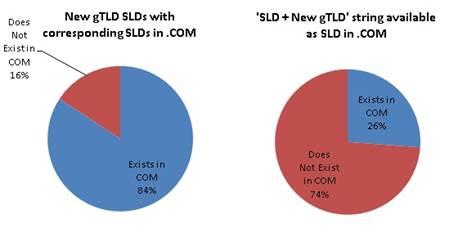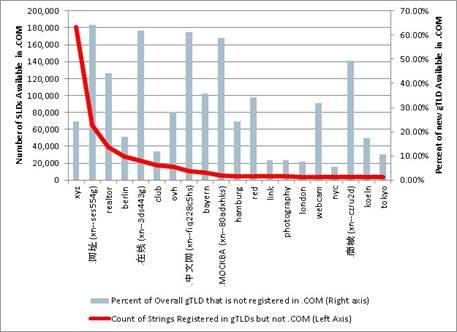Verisign published a post on its blog yesterday entitled “What’s Really New in the New gTLD Space” which was written by Andy Simpson
The piece has some interesting stats and other information that are worth a look in the continuing .Com Vs. New gTLD debate that has been raging on CircleId in the past couple of weeks.
Like all stats you can interpret them many ways.
I think the most interesting stats contained in the post is that 16% (a little less than 500K domains names) of domain names registered in new gTLD’s are not registered in .Com’s.
That mean one of two things to me.
One is that many of these registrations maybe on free or very low cost new gTLD’s (lets say $5 or under retail). We already know there are more than 500,000 free new gTLD registrations that can explain it right there or that .Com and new gTLD’s can have a separate market and that the domain space is not a zero sum game where one can win if only the other loses.
Here are the highlights:
“As someone who has long studied trends in the domain name industry, the opening of hundreds of new gTLDs has intrigued me for quite some time on many levels. One question I found myself pondering was: Will new gTLDs create “new” naming trends or redundant domains across many TLDs? ”
“With more than 3 million domains delegated in the new TLD space there is now a corpus to study to answer this question.”
“The short answer is clear from these first two pie charts which illustrate the percentage of the second-level domains (SLDs) that were available in .COM as of 12/15/2014:

To answer the redundancy question, I looked at comparing SLDs in new gTLDS with SLDs in .COM.
The results show that a significant majority (~84%) of the SLD strings being registered in the new gTLDs are also registered in .COM.
However, there are 521,834 new gTLD domain names (493,563 unique SLD strings, or 16% of all new gTLD SLDs) that are registered in new gTLDs but not in .COM.
Next, I looked at whether the combination of the SLD and new gTLD string is available as a SLD in .COM –e.g. Andy.NewgTLD as AndyNewgTLD.COM.
As can be seen in the second pie chart, when the new gTLD is combined with the SLD, nearly 75% of the names registered in new gTLDs are available in .COM today.
Digging deeper, I proceeded to explore which new gTLDs are the home of new SLDs that don’t exist in .COM?
For starters, a few gTLDs seem to have a disproportionate number of these strings.
The bar chart shows the top new gTLDs that have “distinct” new gTLD names along with the percentage of their zone that is in effect now “distinct” from .COM:

One interesting takeaway is that the IDN TLDs all skew higher in terms of the portion of their base that is “distinct”.
Intuitively, it seems that these may be an area where broader internationalization in new gTLDs help the domains make sense (i.e., IDN.IDN).
A couple of other interesting facts:
Using a domain tokenization algorithm I have written that identifies domains that are made up of exclusively English keywords.
153,316 (31%) of the SLDs registered in new gTLDs that are available in .COM are keyword exclusive domains.
A few example strings that were available in .COM at the time of writing include: pvcbusiness, emailinvention or searchcustomerservicejobs.
I also observed that it is possible that end users and / or applications are confused using the new gTLDs and are trying to reach the .COM domains in error.
I observed this by looking at DNS requests for the new gTLD strings that are available in .COM.
When observing the DNS requests for the string in .COM, I found that for more than 20,000 strings they began being requested as .COM strings only after the new gTLD string was registered.
While this is an opportunity for applicants that may wish to acquire the corresponding SLDs within .COM, it also further illustrates the universal acceptance challenges that continue to exist with new gTLDs.
